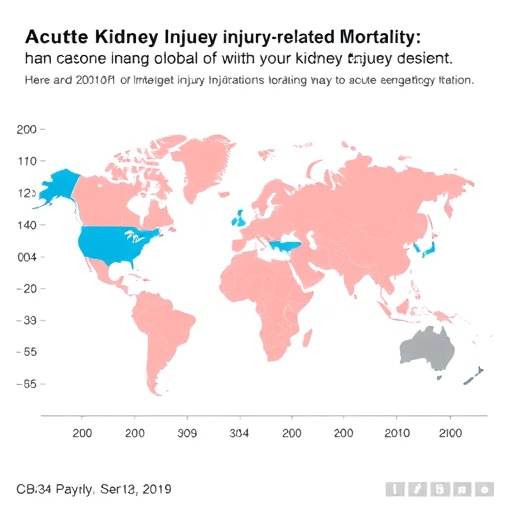DALLAS, April 15, 2019 — A label showing added sugars content on all packaged foods and sugary drinks could have substantial health and cost-saving benefits in the United States over the next 20 years, according to a new study published in the American Heart Association’s journal Circulation. Using a validated model, researchers were able to estimate a significant reduction in cardiovascular disease and type 2 diabetes cases from 2018 to 2037, if such a mandated addition to the Nutrition Label was implemented.
Poor diet, especially with overconsumption of sugar, is a known, preventable cause of cardiovascular disease and diabetes. The Food and Drug Administration (FDA) announced an added sugars-labeling requirement on the Nutrition Facts label in 2016.
“The purpose of our study was to estimate the impact of the FDA’s added sugars label on reducing sugar intake and preventing diabetes and cardiovascular disease,” says Renata Micha, R.D., Ph.D., of the Friedman School of Nutrition Science and Policy at Tufts University in Boston. “Our results indicate that timely implementation of the added sugars label could reduce consumption of foods and beverages with added sugars, which could then lead to an improvement in health and a reduction in healthcare spending.”
The study was conducted as part of a National Institutes of Health-funded initiative, Food-PRICE, at Tufts University to identify nutrition strategies that can have the greatest impact on improving diet and health in the U.S.
The researchers predict that between 2018 and 2037, the added sugars label would prevent more than 354,000 cardiovascular disease cases and lead to almost 600,000 fewer cases of type 2 diabetes. The estimated reduction in net healthcare costs would be more than $31 billion, after policy costs have been factored in, and not including societal costs, such as lost productivity.
“We and others have shown that food labeling can be an effective strategy to support informed consumer choice and effectively change consumer behavior,” said Micha.
The study authors believe that the added sugars label would likely encourage food and beverage-makers to reformulate their products. As a result, they calculate the impact to be twice as great as having the added sugars label alone, at more than 700,000 fewer cases of cardiovascular disease and 1.2 million fewer diabetes cases, with net healthcare cost savings of more than $57 billion.
In explaining the potential effect that a mandated added sugars label would have on sugar content, Micha points to recent experience with food manufacturers who reduced or removed trans fats from their products following trans-fat labeling on products in the U.S. “That suggests that mandated labeling of added sugars content would stimulate the food industry to reduce sugar in their products,” she said.
“Clear, easy-to-understand nutrition labels help guide everyone on the path to healthy eating,” says Linda Van Horn, PHD, RDN., American Heart Association volunteer expert and Professor and Chief of Nutrition in the Department of Preventive Medicine at the Feinberg School of Medicine, Northwestern University, in Chicago. “Consumers are better empowered to make more informed food choices that will help reduce their risk for heart disease and stroke and live longer, healthier lives.”
Although there have been recent declines in sugar consumption, mainly from sugary drinks, Americans still consume more than 300 calories per day from added sugar. The largest single source is sugary drinks, followed by cookies, cakes and pastries, candies and ice cream.
“Our findings may be conservative and underestimate the full health and economic impacts. The model only evaluated health benefits and cost-savings from diabetes and cardiovascular disease outcomes,” said Micha, who added that impact on other health concerns could further contribute to health benefits and reduced costs.
###
The study was conducted as part of the Food-PRICE: Food Policy Review and Intervention Cost-Effectiveness research initiative (http://www.
Co-authors are Yue Huang, M.S.; Chris Kypridemos, M.D., Ph.D.; Junxiu Liu, Ph.D.; Yujin Lee, Ph.D.; Jonathan Pearson-Stuttard, B.M. B.Ch; Brendan Brendan Collins, Ph.D.; Piotr Bandosz, M.D.; Simon Capewell, M.D., D.Sc.; Laurie Whitsel, Ph.D.; Parke Wilde, Ph.D.; Dariush Mozaffarian, M.D., Dr.P.H.; and Martin O’Flaherty, M.D., Ph.D.
Additional Resources:
After April 15, view the manuscript online.
Understanding the Food Nutrition Labels
Making the Most of the Nutrition Facts Label (infographic)
Follow AHA/ASA news on Twitter @HeartNews
Statements and conclusions of study authors published in American Heart Association scientific journals are solely those of the study authors and do not necessarily reflect the association’s policy or position. The association makes no representation or guarantee as to their accuracy or reliability. The association receives funding primarily from individuals; foundations and corporations (including pharmaceutical, device manufacturers and other companies) also make donations and fund specific association programs and events. The association has strict policies to prevent these relationships from influencing the science content. Revenues from pharmaceutical and device corporations and health insurance providers are available at https:/
About the American Heart Association
The American Heart Association is a leading force for a world of longer, healthier lives. With nearly a century of lifesaving work, the Dallas-based association is dedicated to ensuring equitable health for all. We are a trustworthy source empowering people to improve their heart health, brain health and well-being. We collaborate with numerous organizations and millions of volunteers to fund innovative research, advocate for stronger public health policies, and share lifesaving resources and information. Connect with us on heart.org, Facebook, Twitter or by calling 1-800-AHA-USA1.
Media Contact
Carrie Thacker
[email protected]
Related Journal Article
https:/
http://dx.




